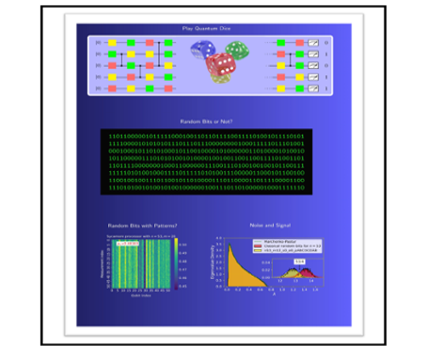Sabre Kais Group
Quantum Information and Quantum Computation
Statistical Properties of Bit Strings Sampled from Random Quantum Circuits
Quantum computers could beat current computers that are just a part of everyday life, for some computational tasks. In 2019 Google claimed so-called quantum supremacy/advantage for random circuit sampling tasks using the 53-qubit Sycamore quantum processor. What is random circuit sampling Google did? What are the outputs? Simply speaking, random circuit sampling is to generate random bits (0 or 1) in a quantum mechanical way. It is something like playing quantum dice or quantum coin tossing. Google’s output data are about 10 million lines of bit strings, look random, but different from classical random bit strings. We showed how Google’s bit strings are different from classical bit-strings using random matrix theory and the Wasserstein distance calculation (a distance between probability distributions, widely used in machine learning). Is it useful? Some people think the Google experiment is useless, but just for demonstration of quantum advantage. Well, random circuit sampling is to select quantum evolution (unitary operator) randomly and related to the circular unitary ensemble of random matrices initiated by Freeman Dyson. Random matrix theory has many applications in mathematics, physics, and engineering. If a unitary operator could be selected uniformly randomly, one may think of the Brownian motion of quantum evolution

Published Research Articles
Statistical Properties of Bit Strings Sampled from Random Quantum Circuits
Sangchul Oh and Sabre Kais
J. Phys. Chem. Lett. 2022, 13, 7469−7475 DOI: 10.1021/acs.jpclett.2c02045 | Link to PDF